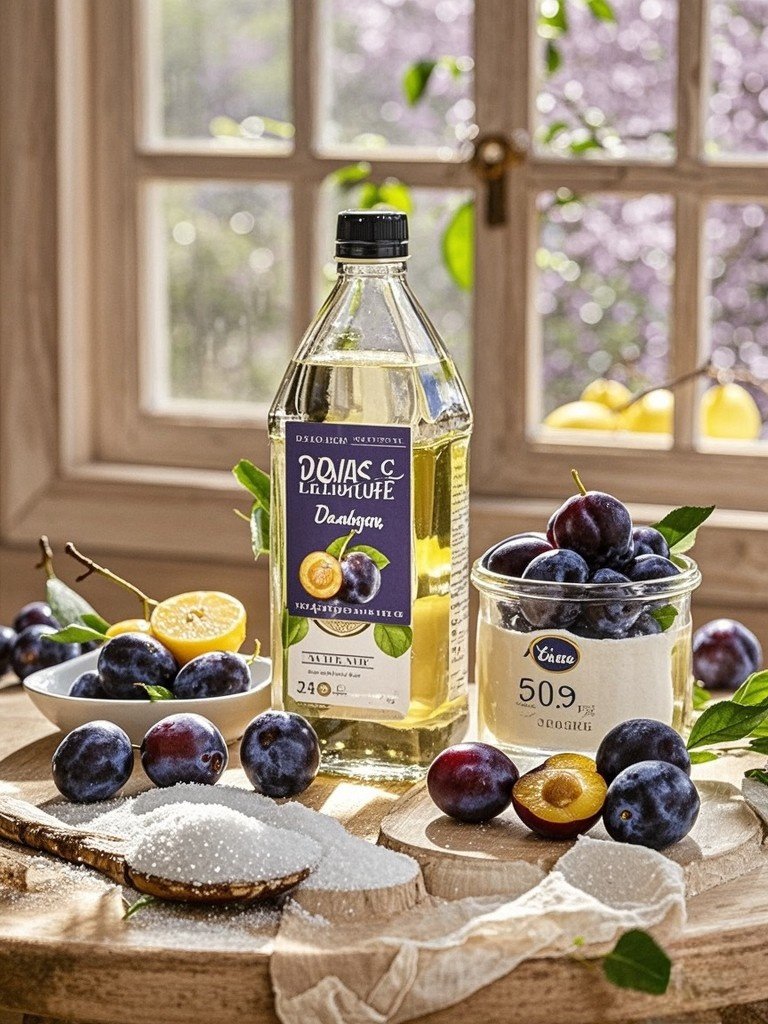Damson jam recipe mary berry
Damson jam recipe mary berry
I. Introduction
Mary Berry is a famous figure in British cooking. She has inspired many home cooks with her simple recipes and love for fresh ingredients. Her recipes remind people of special memories and provide comfort, making them ideal for family gatherings or quiet days at home. This damson jam recipe highlights her focus on quality and tradition. It also includes useful background information, nutritional details, and vegan options, ensuring it tastes amazing and stays true to its origins.

II. Mary Berry’s Unique Approach & Historical Context
Mary Berry is famous for always using the best ingredients. As a trained chef and cookbook author for more than fifty years, her recipes are trusted and respected. Damson jam, made from the tasty and tangy damson plum, has a long history that goes back to Roman times when plums first grew in Britain. Over the years, this jam changed from just a way to keep fruit fresh to a beloved addition to scones and cheeses.
Mary Berry’s damson jam recipe follows traditional methods, focusing on ripe damsons and just the right amount of sugar to bring out the natural fruit taste. This recipe honors history while showing her passion for British cooking.

III. Notices on Ingredients & Equipment
Ingredients:
- Damson Plums: 1 kg, fully ripe
- Granulated Sugar: 750 g
- Water: 300 ml
- Juice of 1 Lemon: for acidity
Quality Recommendations: Choose damsons that are plump and slightly soft to ensure the best flavor. For sugar, opt for granulated sugar as it dissolves easily and helps achieve a smooth jam texture.
Equipment:
- Large heavy-based saucepan
- Wooden spoon
- Sterilized jars with lids
- Thermometer (optional, for precise jam setting)
- Muslin cloth or fine sieve (for straining)
IV. Recipe Instructions
Prepare the Damsons: Rinse the damson plums under cold water and remove any stems. Place them in a large heavy-based saucepan along with the water.

Cook the Fruit: Heat the saucepan over medium heat, stirring occasionally until the plums start to break down and release their juices (about 10-15 minutes).

Strain the Mixture: Once the plums are soft, pour the mixture through a muslin cloth or fine sieve to extract the juice. Allow it to drain completely, pressing gently to extract as much liquid as possible.

Combine with Sugar: Measure the amount of juice collected and mix it with the granulated sugar in a clean saucepan. After this, Stir over low heat until the sugar dissolves completely.

Boil and Test: Bring the mixture to a rapid boil, stirring continuously. Use a thermometer to check for setting point (105°C or 221°F), or test by placing a spoonful on a cold plate and checking if it firms up after a minute.
Jar the Jam: Once set, remove the saucepan from heat. Carefully pour the hot jam into sterilized jars, leaving a small gap at the top. Seal with lids while still warm.

V. Flavor Profile & Nutritional Information
The flavor profile of damson jam is a delightful blend of tartness and sweetness, with a floral aroma that captures the essence of summer. A typical serving (1 tablespoon) contains approximately:
- Calories: 50
- Fat: 0 g
- Carbohydrates: 13 g
- Protein: 0 g
- Fiber: 0 g
- Sugar: 12 g
VI. Tips for a Perfect Damson Jam
- Troubleshooting Common Issues: If your jam is too watery, ensure you’ve cooked it long enough to reach the setting point. If it’s too thick, you can add a bit of water and simmer gently.
- Enhancing Flavor: For a richer flavor, consider using a mix of different plums or adding a splash of brandy before jarring.
- Variations: Experiment with spices such as cinnamon or cloves for a warm twist, or add a few sprigs of rosemary during cooking for a herbal note.
VII. Alternative (Vegan and Non-Vegan)
This recipe is inherently vegan. For variations, you can explore adding different fruits like apricots or blackberries for unique flavors, while keeping the same base method.
VIII. Recipe Variations & Serving Suggestions
Serve damson jam on warm toast, with scones and clotted cream, or alongside cheese boards for a delightful contrast. It tastes great with yogurt or ice cream.
IX. Storage & Reheating Instructions
Store sealed jars of jam in a cool, dark place, and once opened, keep in the refrigerator. Reheat gently in a saucepan if needed, ensuring not to boil again.
X. Frequently Asked Questions (FAQ)
- Can I use frozen damsons? Yes, frozen damsons can be used; just ensure they are thawed and drained well before use.
- How long will the jam last? Properly sealed and stored, damson jam can last up to a year. Once opened, consume within a month.
- Can I reduce the sugar? While sugar is essential for preservation and texture, you can experiment with reducing it slightly, keeping in mind that it may affect the jam’s shelf life.
XI. Conclusion & Call to Action
This damson jam recipe is not only delicious but also versatile, making it a wonderful addition to your kitchen. Try making it at home and share your experiences! Don’t forget to check out other delightful recipes from Mary Berry and related resources.
XII. Additional Resources
- Mary Berry’s Official Cookbooks
- Culinary Hill for more culinary inspiration.






